 Hα and White - (Ray Emery)
Hα and White - (Ray Emery)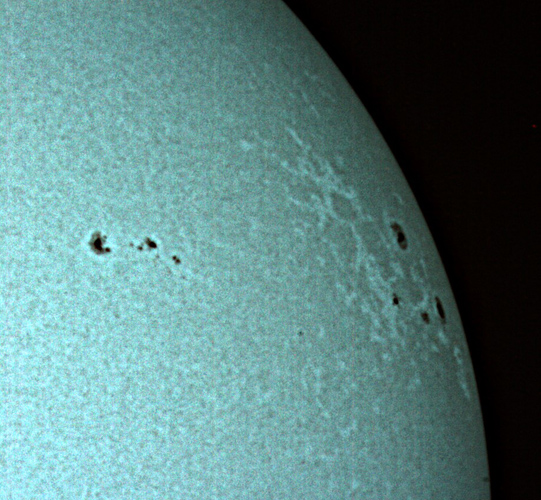 Hβ - (Rod Levene)
Hβ - (Rod Levene)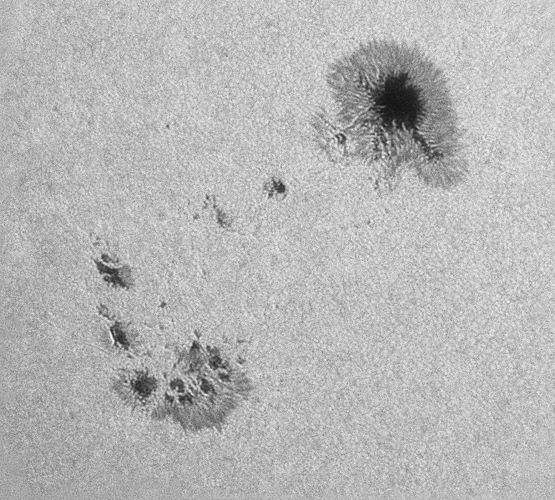 AR3053 Sunspot 08/07/2022 - (John Arnold)
AR3053 Sunspot 08/07/2022 - (John Arnold)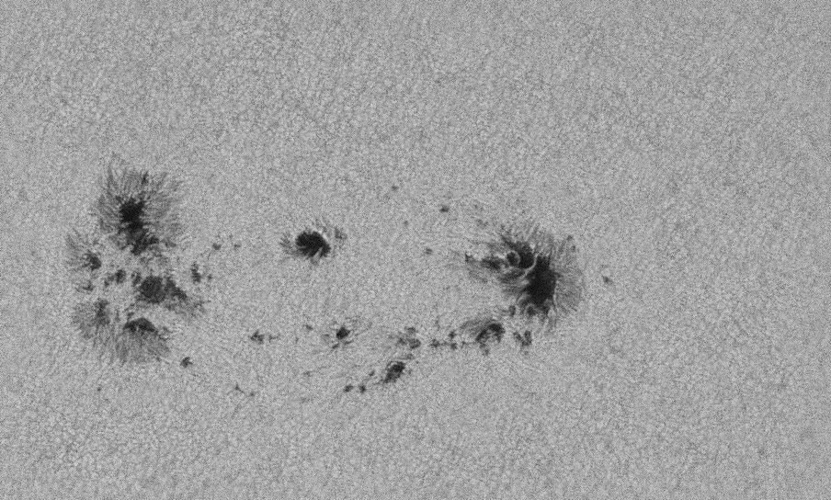 AR3038 Sunspot 20/06/2022 - (John Arnold)
AR3038 Sunspot 20/06/2022 - (John Arnold)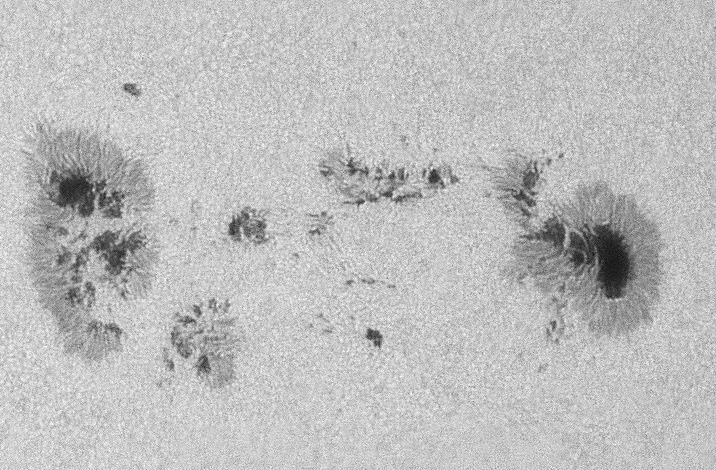 AR3038 Sunspot 22/06/2022 - (John Arnold)
AR3038 Sunspot 22/06/2022 - (John Arnold)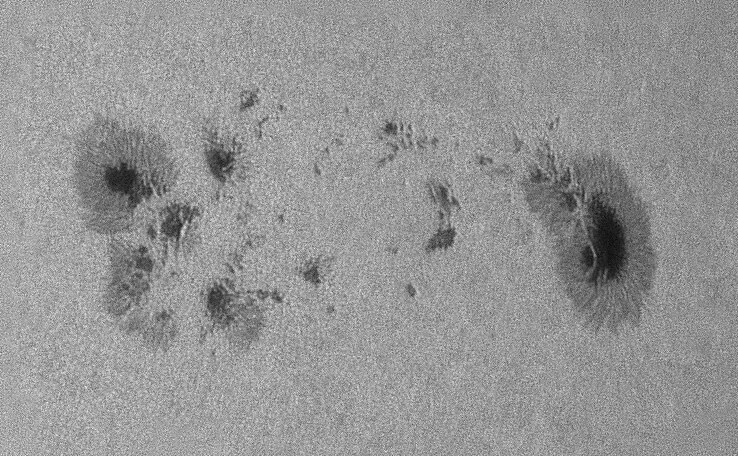 AR3038 Sunspot 23/06/2022 - (John Arnold)
AR3038 Sunspot 23/06/2022 - (John Arnold)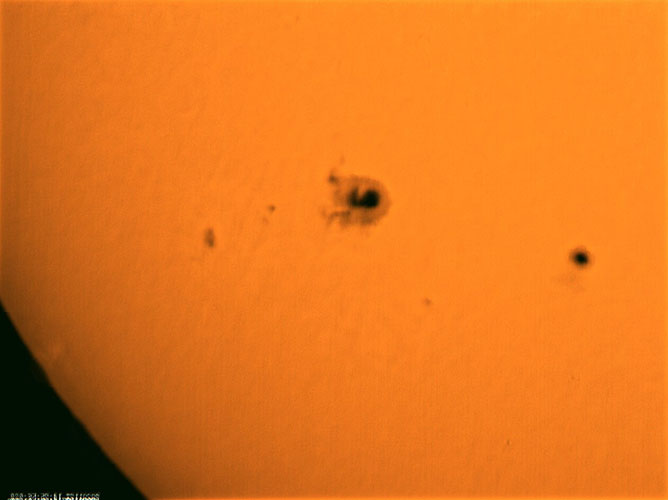 AR2786 Sunspot 27/11/2020 - (Rod Levene)
AR2786 Sunspot 27/11/2020 - (Rod Levene)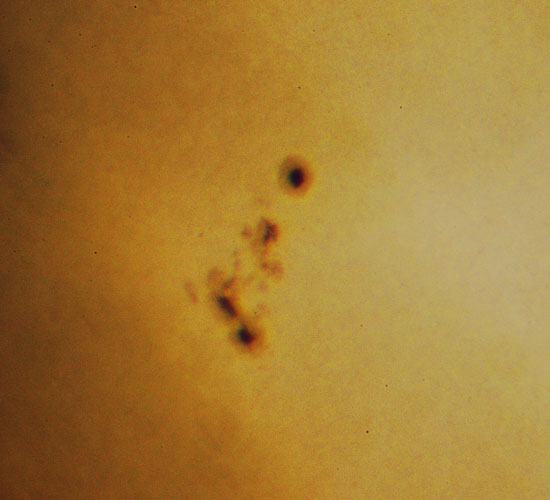 Sunspot 06/11/2020 - (John Arnold)
Sunspot 06/11/2020 - (John Arnold)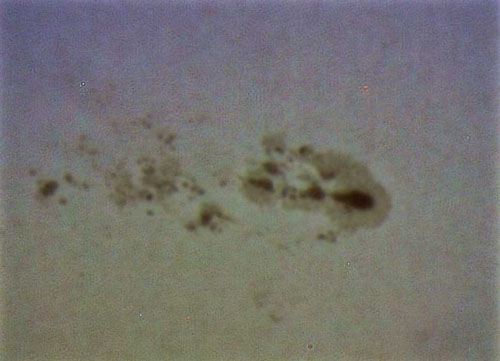 Sunspot - (Rod Levene)
Sunspot - (Rod Levene)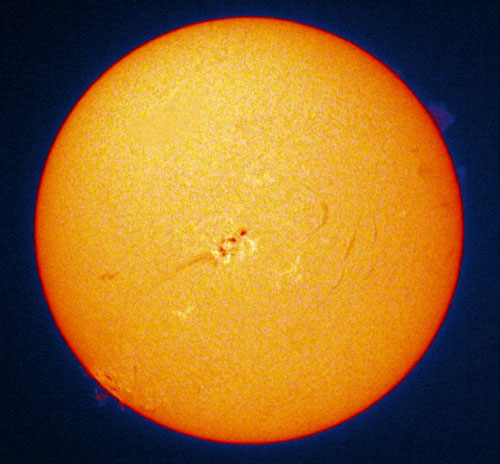 Combined visible & Ha - (Ray Emery)
Combined visible & Ha - (Ray Emery)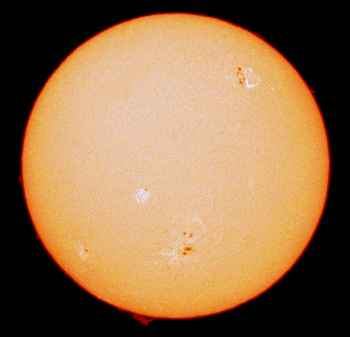 Two days latter - (Ray Emery)
Two days latter - (Ray Emery)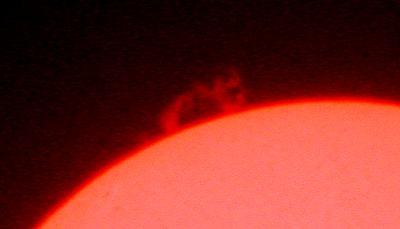 Prominence - (Ray Emery)
Prominence - (Ray Emery)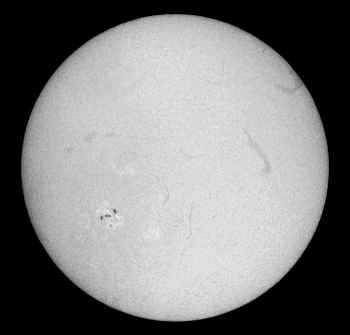 21/10/2004 Ha - (Ray Emery)
21/10/2004 Ha - (Ray Emery)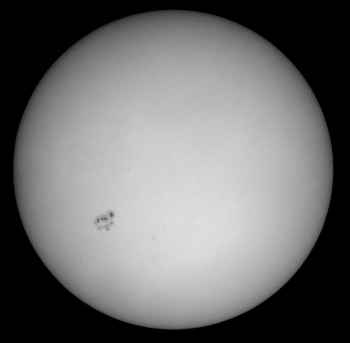 21/10/2004 Visible - (Ray Emery)
21/10/2004 Visible - (Ray Emery)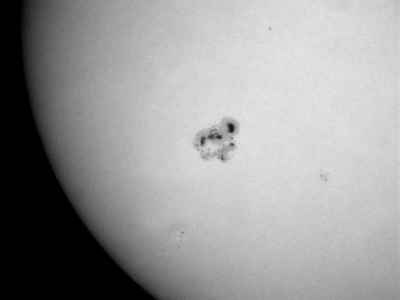 21/10/2004 - Magnified (Ray Emery)
21/10/2004 - Magnified (Ray Emery)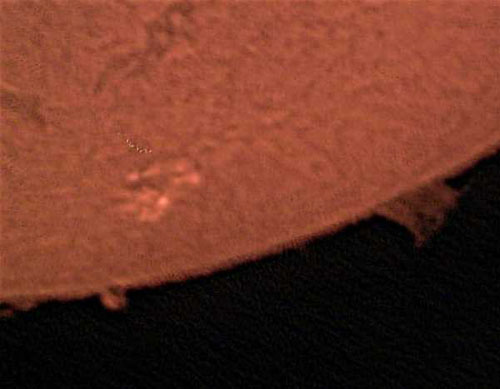 Prominence - (Rod Levene)
Prominence - (Rod Levene)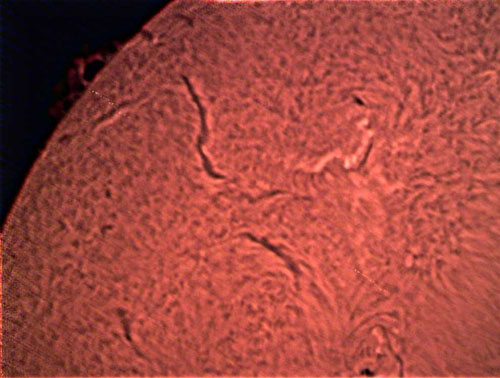 Prominence - (Rod Levene)
Prominence - (Rod Levene)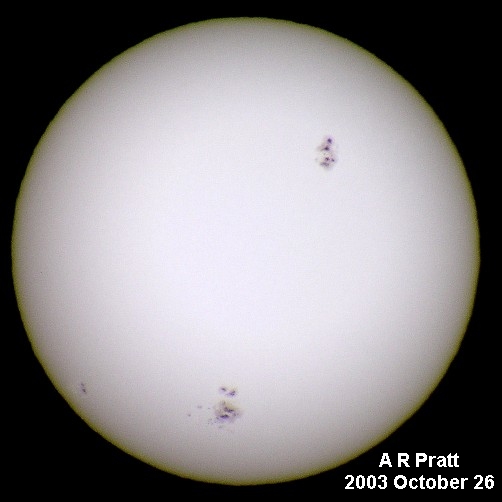 (Visible & Ha)
(Visible & Ha)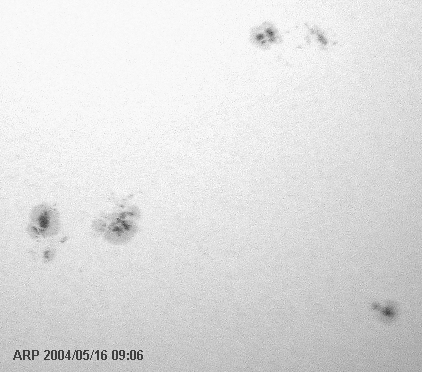
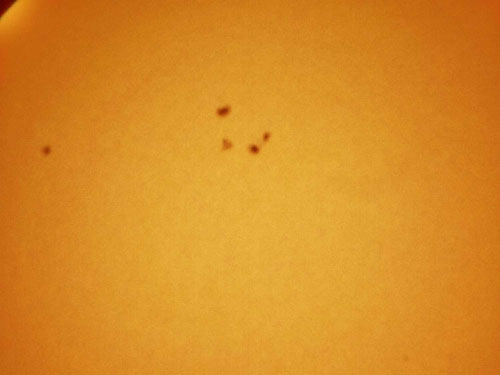 Sunspot - (Ron Gittins)
Sunspot - (Ron Gittins)
Information...
Sunspots can be seen on the sun as darker areas, where the temperature of the Sun's photoshere is about 2,000°C less than it's usual temperature (5,500°C). The spots are transitory, appearing and moving across the surface of the Sun, and are comprised of a darker inner region called the umbra and an outer higher temperature region called the penumbra.
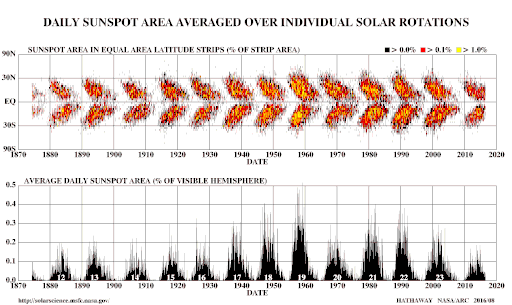
The number of sunspots varies with time & it was realised in the mid-19th century that there is an 11 year cycle between peak years. When the sunspot's height above the Sun's equator was plotted as a function of the sunspot cycle, in 1904 by E. Walter Maunder, a pattern was discovered. Early on in the each 11-year cycle, the sunspots are concentrated at large distances from the Sun's equator. Later they appear closer to the equator, giving the plots a 'butterfly'-like appearance.
The magnetic fields around sunspots can be investigated by looking at the splitting of spectral lines (the Zeeman effect). In 1908 George Ellery Hale demonstrated showed that the magnetic fields were stronger in sunspots, and that spots appeared in pairs, owing to the magnetic dipoles. Each pair has one spot in the Northern solar hemisphere, and one with opposite polarity in the Southern solar hemisphere. And for each 11 year cycle, the leading spot appears in either the North or the South hemisphere, with the sun's magnetic field reversing every 11 years. This means that the sunspot activity represents a 22 year cycle in the Sun's magnetic field.
Because the Sun's magnetic field isn't constant, this means that it doesn't arise in the core (like that in the Earth), but originates below the surface. From observations of the time it takes for spots to move across the surface, it's clear that there is differential rotation, with the equator moving faster than locations nearer the poles. This distorts the magnetic field lines in the Sun because charged particles in matter cannot move across the magnetic field lines, so instead they drag the magnetic lines with them. The magnetic fields thus get wound up and concentrated in places, forming kinks which break through the surface, giving rise to the sunspots.
Prominences are another manifestation of the Suns magnetic field, and are created at the edges of sunspots on the boundary of the regions of magnetic polarity. At the limb of the Sun they appear to be projected into space.
For much more detailed info. see the Wikipedia entry.